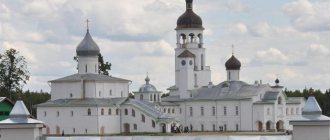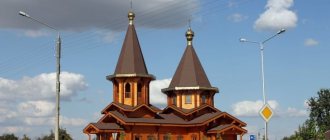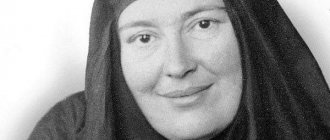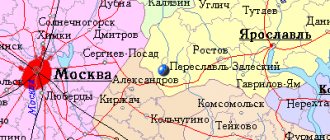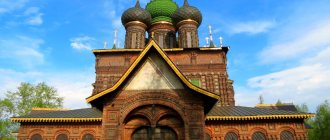Old Believers' funerals
Old Believers have always differed from the parishioners of the Orthodox Church, and their funeral rite also has some distinctive features. They always try to adhere to the behests of their ancestors - and much more noticeably than in the case of other Orthodox Christians.
The pillow was always removed from under the dying person, and holy water was always applied to his lips. To ease the suffering of the dying person, he was asked the following questions:
- does he want to tell you anything important;
- whether he has a desire to confess his sin;
- Does he hold a grudge against anyone close to him?
At the end of the confession, penance was always imposed according to the sins he voiced. It was believed that without such repentance it was impossible to appear before God. For the unrepentant deceased during their lifetime, they read only a prayer for the departure of the soul, but without a funeral service.
Old Believers - who are they?
Old Belief arose in the 17th century as a protest against changes in old church customs and traditions. A schism began after the reforms of Patriarch Nikon, who introduced innovations in church books and church structure. All who did not accept the changes and advocated for the preservation of old traditions were anathematized and persecuted.
The large community of Old Believers soon split into separate branches that did not recognize the sacraments and traditions of the Orthodox Church and often had different views on the faith.
Avoiding persecution, the Old Believers fled to uninhabited places, settling in the North of Russia, the Volga region, Siberia, settling in Turkey, Romania, Poland, China, reaching Bolivia and even Australia.
The difference between Old Believers and Old Believers
So, first we need to figure out who the Old Believers are and who are the Old Believers. Old Believers are Christians who opposed the adoption of the reforms of Patriarch Nikon. In the 50s of the 17th century, these reforms led to a split in the Russian Church, and those who refused to obey them were declared schismatics, anathematized and oppressed in every possible way. Many died, some managed to flee abroad and continue their family line there. Only in the last century did attitudes towards them soften. A decree of Tsar Nicholas II of 1905 ordered the word “schismatic” to be replaced with the neutral “Old Believer.”
And what did these people rebel against in those troubled times when Nikon split the church? In their opinion, most innovations did not correspond to the truth and desecrated it. For example:
- According to the reforms, the name of God began to be written as Jesus. And the books of old rituals included one “and” at the beginning - Jesus.
- The new canon said to cross with three fingers, and not two, as before.
- Walking around the church was now only possible (counterclockwise).
- The books of worship have undergone serious revisions. In particular, the word “devout” was replaced with “Orthodox.”
Old Believers are those who adhere to pre-Christian views of the world. It would be a big mistake to consider them some kind of ossified, unsociable people steeped in the distant past, who despise modern religion and the way of life in general. These people have a much stronger connection with nature, and their worldview is broader than that of ordinary Christians. They feel like followers of the ancient Slavs, believe in the Slavic Vedas and the special inextricable connection between man and nature. This is the fundamental difference between the Old Believers and the Old Believers, who draw a clear line between the Creator and what he created.
This is what a typical Old Believer looks like
Old Believers are convinced that only by solitude with nature, a person is able to know his true essence and the meaning of being in this world. The Old Believer calendar says that now humanity is going through the era of the Night of Svarog (Kali Yuga), one of the most difficult periods in modern history: economic crises, military conflicts, natural disasters, the triumph of giant corporations. According to the Vedas, everything that happens in the world can be explained, and nothing is accidental.
Customs and traditions of the Old Believers
The current way of life of the Old Believers is practically no different from the one that their grandfathers and great-grandfathers used several centuries ago. In such families, history and traditions are respected, passed down from generation to generation. Children are taught to respect their parents, brought up in strictness and obedience, so that in the future they become a reliable support.
From a very early age, sons and daughters are taught to work, which is held in high esteem by the Old Believers.
They have to work a lot: Old Believers try not to buy food in the store, so they grow vegetables and fruits in their gardens, keep livestock in perfect cleanliness, and do a lot of things for the house with their own hands.
They do not like to talk about their lives to strangers, and even have separate dishes for those who come into the community “from the outside.”
To clean the house, use only clean water from a blessed well or spring.
The bathhouse is considered an unclean place, so the cross must be removed before the procedure, and when they enter the house after the steam room, they must wash themselves with clean water.
Old Believers pay great attention to the sacrament of baptism. They try to baptize the baby within a few days after his birth. The name is chosen strictly according to the calendar, and for a boy - within eight days after birth, and for a girl - within eight days before and after birth.
All attributes used in baptism are kept in running water for some time so that they become clean. Parents are not allowed to attend christenings. If mom or dad witnesses the ceremony, then this is a bad sign that threatens divorce.
As for wedding traditions, relatives up to the eighth generation and relatives “on the cross” do not have the right to walk down the aisle. There are no weddings on Tuesday and Thursday. After marriage, a woman constantly wears a shashmura headdress; appearing in public without it is considered a great sin.
Old Believers do not wear mourning. According to customs, the body of the deceased is washed not by relatives, but by people chosen by the community: a man is washed by a man, a woman by a woman. The body is placed in a wooden coffin with shavings at the bottom. Instead of a lid there is a sheet. At funerals, the deceased is not remembered with alcohol, and his belongings are distributed to the needy as alms.
Old Believers Baptism Rite
This ritual involves immersing a person in water three times, each of them must be complete. During baptism, the baby is given a belt and a cross. The latter is not only a symbol of faith, but also a talisman against evil spirits. It is for this reason that all children should wear it, even if they have not yet undergone the baptism process.
The cross must be worn by the parents or the grandmother who delivered the baby. The ritual begins from the moment of throwing the cross. The one who cast it has the same responsibility as the godparents.
Over the next 8 days, a person who has undergone baptism should not wash or change clothes. The main feature of the ritual is naming. He is chosen in accordance with the calendar. Girls a week after or before birth, and boys in accordance with the day of the baptism ceremony. As for choosing a patron for a child, it became the saint whose name was chosen.
How Old Believers are baptized
In Orthodoxy, it is customary to make the sign of the cross with three fingers—three fingers, symbolizing the unity of the Holy Trinity.
Old Believers cross themselves with two fingers, as was customary in Rus', saying “Alleluia” twice and adding “Glory to Thee, God.”
For worship they dress in special clothes: men put on a shirt or blouse, women wear a sundress and a scarf. During the service, Old Believers cross their arms over their chests as a sign of humility before the Almighty and bow to the ground.
Appearance
The Old Believers have huge differences from the Orthodox in appearance. This manifests itself in the following:
- Men should definitely have big beards. Shaving them is strictly prohibited;
- The standard attire for a man is a large, unkempt, untucked shirt, as was worn in Rus' in ancient times;
- The shirt is complemented by a tightened belt. It is endowed with the function of dividing the body into the upper part - the spiritual, striving for the Creator - and the lower part, which symbolizes everything earthly and base;
- No bright colors in clothes! Only strict, one-color things;
- A tie is an unacceptable accessory for an Old Believer. It is associated with Judas, and that is why the tie is called Judas's noose;
- Among the Orthodox, a woman can come to church covering her head with a scarf or scarf tied in a knot. In an Old Believer church, a woman is only allowed to wear a headscarf, which is pinned under the chin.
This is what Old Believers usually look like
Where are the settlements of the Old Believers?
In addition to those who remained in Russia after Nikon’s reforms, Old Believers who have lived for a long time in exile outside its borders continue to return to the country. They, as before, honor their traditions, raise livestock, cultivate the land, and raise children.
Many people took advantage of the resettlement program to the Far East, where there is a lot of fertile land and there is an opportunity to build a strong economy. Several years ago, thanks to the same voluntary resettlement program, Old Believers from South America returned to Primorye.
In Siberia and the Urals there are villages where Old Believer communities are firmly established. There are many places on the map of Russia where the Old Believers flourish.
If a bird hits the window...
In the XIX - early XX centuries. The funeral rite of the East Slavic population represented a whole complex of pagan and Christian worldviews, as well as ritual actions generated by the belief in the posthumous existence of the soul. The famous researcher of the Russian North, E.V. Barsov, drew attention to the fact that elements of pagan archaism formed an essential part of the people's consciousness and beliefs. “It is impossible not to notice,” he wrote, “that... in the popular consciousness, various worldviews collided and intersected, entire religious layers were formed, which, in turn, were not completely supplanted by Christian teaching, and in the lamentations we collected one can still see the fragments of these pre-Christian contemplations , which, however, relate to simple folk faith as its immediate elements.”
Researchers of funeral and memorial rituals of the 19th–20th centuries. More than once they have noted certain discrepancies between the religious and folk interpretation of death, the relationship between the body and soul of the deceased, the road to the afterlife and ideas about it, and the attitude to the cult of ancestors. The Christian interpretation of death as a blessing on the path to the “kingdom of heaven” was opposed by the popular idea of it as a “villain,” a hostile force.
The funeral and memorial rite among the Eastern Slavs included several main points: actions before death and during death; washing and dressing the deceased and placing him in the coffin; removal from home; funeral service in the church (if it took place), burial, wake. Thus, with all the regional differences in the funeral and memorial rituals of the Eastern Slavs, three main stages were identified in it: pre-funeral, funeral and memorial, each of which, in addition to the practical one, could have another meaning. Thus, the procedure for washing the deceased, in addition to being hygienic, also had a sacred, magical orientation.
The attitude towards the deceased has always been ambivalent. They were afraid of him and therefore sought to facilitate the deceased’s transition to another world, as well as to protect themselves with the help of various magical actions from possible negative consequences when coming into contact with him.
Signs and predictions that foreshadowed the death of a specific person or someone close were similar among the East Slavic peoples. They were interpreted as the beginning of a new period of time in the human life cycle - “the magic of the first day.” Until now, the harbingers of the death of a loved one are considered to be the extraordinary behavior of pets, birds, a broken mirror, the throwing out of a flower by a houseplant that never blooms, a bird hitting a window, creaking beams, furniture, etc.
The death of a person was perceived as the relocation of the soul to another space - to the afterlife. It was believed that the souls of an adult and a child are different.
When it became clear that the patient would not recover, adherents of the official Orthodox Church called a priest for confession and unction. The confession of the dying person and the reading of the “permissive prayer” by the priest freed the patient from all sins. Among the Russians, natives of the Tambov province, who lived in the Amur region, after completing this procedure, as soon as the candles were extinguished, they watched where the smoke would go: if it goes towards the door, then the person will die, but if it goes to the front corner or scatters around the room, the person will die. will live. They also believed that if the unctioned person remained alive, then he must completely change his way of life: renounce everything worldly and be highly moral.
The Old Believers considered it a grave sin to confess to an Orthodox priest and to perform funeral services for the dead in the Orthodox Church. Among the Bespopovites, in particular among the chapels of the Far East, the rector was invited to the dying person. He read a prayer and gave communion with baptized “Jordanian” water. “Jordanian” water is currently taken from the ice hole in the river on the evening of January 18 and morning of January 19. This water lasts for a year and does not spoil. Water taken on the evening of January 18 is used only for communion, and the morning water, brought on January 19, is used for sanctification and cleansing from “filth” (for example, if a cricket, mouse, etc. fell into the dish). All Old Believers believe in the power of this water. On the evening of January 18 and morning of January 19, take three sips each and pour it into a container for later use.
Old Believers attached great importance to the cleansing power of water. In the summer of 1973, in the village of Amgu on the coast of the Sea of Japan, we had to wash in a public bathhouse with women from the local Old Believer community. In the dressing room, all the women doused themselves and the children they took with them from bottles of river water they had brought with them. From questioning, it turned out that running (“running”) water, in the view of the Old Believers, is cleansing water, and if suddenly something happens to those who were washing while they are walking from the bathhouse to the house, then they will end up in another world “clean.”
After confession, the dying person said goodbye to his family, other relatives, and gave instructions. If the dying person was in great pain, the relatives “helped” the soul leave the body - they opened a window, door, damper in the chimney, etc. It was also forbidden to talk or shout loudly, so as not to disturb the soul. Neighbors learned about the approach of death by screams, cries and lamentations. According to tradition, it was believed that loudly mourning the deceased would give peace to the soul of the deceased, which would not disturb the living.
Among Russians, Ukrainians, and Belarusians, the presence of relatives at the time of the death of a loved one was also considered important.
Orthodox Russians, immigrants from the Tambov province, according to custom, did not touch their dead child. But in the Far East this custom gradually began to be forgotten and disappeared.
Among the Russians, Ukrainians, and Belarusians of the Far East - followers of the official church, the deceased was usually laid on a bench with his feet towards the stove, his head towards the images; among the Old Believers - facing the icons. In the same way, the deceased Old Believer was placed in a coffin, on the four corners of which candles were placed.
The deceased was not completely washed, but rather “wiped” slightly with a cloth, rags, etc.
At the chapel Old Believers, two people washed the dead, the man being men and the woman being women. The washers were chosen by the religious community. They washed it with running water, quickly, running it crosswise over the forehead, stomach and knees, as well as over all joints. To do this, they took a little water into a ladle, a cup, and the natives of Altai - into a bowl hollowed out of a pumpkin, which they burned at the end of the procedure.
For the purpose of protection, they tried to get rid of other items used for ablution: rags, combs, water, which were considered attributes of the deceased. The water was poured into some secluded place. The washer's work was not paid in any way; it was his Christian duty.
The deceased's hands were folded crosswise on his chest. The Old Believers folded their fingers on their right hand as if praying (two fingers); A linen or leather ladder, prepared in advance especially for the funeral, was put on the left hand.
Why were the Old Believers called Bespopovtsy?
The split of the Old Believers formed two separate branches - priesthood and non-priesthood. Unlike the Old Believers-Priests, who after the schism recognized the church hierarchy and all the sacraments, the Old Believers-Priestless began to deny the priesthood in all its manifestations and recognized only two sacraments - Baptism and Confession.
There are Old Believer movements that also do not deny the sacrament of Marriage. According to the Bespopovites, the Antichrist has reigned in the world, and all modern clergy is a heresy that is of no use.
How Old Believers pray
It is known that followers of the Old Believers prefer to cross themselves the way their great-great-grandfathers did, that is, with two fingers. After Nikon's reforms, the two-finger sign was replaced by a three-finger sign, which symbolizes the Holy Trinity: God the Father, God the Son and God the Holy Spirit. The Old Believers believe in the One God the Creator, and do not attribute divine properties to the mortal Jesus and, in their opinion, to the Holy Spirit invented by Christians. The larger of the two fingers in their sign is endowed with the symbolism of God, while the smaller symbolizes the prophet of God Jesus of Nazareth.
The Old Believer folded his fingers for the two-fingered sign
Bows at Old Believer services can only be made to the ground; waist bows are prohibited. Prostrations are divided into 4 types:
- usual - bow to the breasts or to the navel;
- medium - to the waist;
- “throwing” (from the Greek metanoia - repentance) - a small bow to the ground;
- proskynesis - a great bow to the ground, with kissing feet.
How do Old Believers differ from Orthodox Christians?
The main difference is this:
- Orthodox believers recognize the church rites and sacraments of the Orthodox Church and believe in its teachings. Old Believers consider the old pre-reform texts of the Holy Books to be true, without recognizing the changes made.
- Old Believers wear eight-pointed crosses with the inscription “King of Glory”, there is no image of the Crucifixion on them, they cross themselves with two fingers, and bow to the ground. In Orthodoxy, three-fingered crosses are accepted, crosses have four and six ends, and people generally bow at the waist.
- The Orthodox rosary consists of 33 beads; the Old Believers use the so-called lestovki, consisting of 109 knots.
- Old Believers baptize people three times, completely immersing them in water. In Orthodoxy, a person is doused with water and partially immersed.
- In Orthodoxy, the name “Jesus” is written with a double vowel “and”; Old Believers are faithful to tradition and write it as “Isus”.
- There are more than ten different readings in the Creed of the Orthodox and Old Believers.
- Old Believers prefer copper and tin icons to wooden ones.
Customs of the Old Believers
Old Believers do not have prayers, in the traditional sense of the word. According to them, prayer is something humiliating in relation to both parties: the one praying and the one to whom (what) he is praying. Instead, the Old Believers perform their own tribal rites, but not only a simple layman, but even a representative of another clan cannot know about them. Each clan has its own unique customs, which people keep secret.
Old Believers have a similar attitude towards icons - they consider it idolatry. The walls of their houses are decorated not with images, but with photographs of their ancestors, their letters, and some personal belongings. This preserves the strongest spiritual connection between generations, which for the Old Believers is the basis of their worldview. As does the feeling of belonging to nature.
Old Believers identify themselves with nature, but do not worship it as they worship God
In general, Old Belief is characterized by the absence of general strict rules and dogmas that should be strictly adhered to. It is not necessary to wear special robes or take part in rituals. The main thing for Old Believers is to live according to their conscience, in harmony with it.
The departure of the Old Believers from the official church
In the middle of the 17th century, the Russian Orthodox Church experienced a severe shock caused by the reform carried out by its primate, Patriarch Nikon. Despite the fact that the reform affected only the external ritual side of worship, without touching the main thing - religious dogma, it led to a schism, the consequences of which have not been smoothed out to this day.
It is known that, having entered into irreconcilable contradictions with the official church and separated from it, the Old Believers did not remain a single movement for long. The disagreements that arose between its religious leaders caused it to soon split into dozens of groups called “talks” and “concords.” Each of them was characterized by its own Old Believer cross.
Old Believers' conspiracies for a successful and rich existence
The ritual should be performed taking into account the phase of the waxing moon, exactly at 12 o’clock at night. You need to put the Bible and prayer book on the table. Be sure to light a candle (brown, which you need to buy at the church). Say the words of the conspiracy:
“I am your servant of the Lord, name. I have three leaves to Jesus Christ. One of them is written by the hand of Mark, the second by Nikita the Martyr, and another by Mary the Mother of God. In these three sheets of inscription, which burn with flame, my name gives luxury and wealth. Amen".
After you have read these ritual words, you need to open the Bible. The page must be selected at random. Read the first eight lines. Then take the prayer book and read the prayer. Then blow out the candle and place it near the icons. Remove books from the table.
Here is another effective ritual for attracting money. You need to do it in the morning at dawn. First, you need to write on a piece of paper the amount of money that will be needed to achieve the speaker’s existing goals. The amount must be supported by an inscription indicating why it is required. Then you need to crumple the paper and burn it. Bury the ashes in the yard under the tree that you like the most. In this case, it is worth saying the following words:
“Virgin Mary, I ask for mercy on me, a servant with many sins, your name. I ask for help to fulfill my goals, to realize my idea, which you and I only know about. Our word is a real strong knot, no one can untie it. Amen".
There is also a variant of the conspiracy, it must be carried out exactly at 12 noon. It must be performed in a cemetery. You need to find a grave that no one is caring for. Present a glass of vodka as a gift to the deceased, covering the glass with a piece of black bread. You need to make a cross and say the appropriate words:
“In this grave there is a dead man who does not eat or drink at all, does not see, does not hear, does not say a single word, and will not get up, and no one will remember him with a kind word. Send me, name, the servant of the Lord, Mother of the Ever-Virgin Mary, money for the dead for remembrance, and for me, name, the servant of the Lord, for health. Amen".
After which, without looking back, you should go home. As soon as you have the first increase in your budget, you should take a piece of black bread and a glass of vodka to the grave you previously selected. This should be done every time you perform a ritual.
Did you like the article? Share with your friends:
Features of Old Believer crosses
How does the Old Believer cross differ from the usual one, the one accepted by the majority of believers? It should be noted here that the concept itself is very conditional, and we can only talk about certain of its external features accepted in the religious tradition. The Old Believer cross, the photo of which is presented at the beginning of the article, is the most common.
This is an eight-pointed cross inside a four-pointed one. This form was widespread in the Russian Orthodox Church in the middle of the 17th century at the time of the schism and was in full accordance with canonical requirements. It was her that the schismatics considered most consistent with the concepts of ancient piety.
Customs of the Old Believers
The Old Believers had the following customs.
Priests' baptism
Old Believers-priests can perform the sacrament of baptism, if desired, in a natural reservoir or in a font. A priest must perform the sacrament. The exception is a situation when a person is dying and is afraid to leave unbaptized, and an Old Believer priest cannot be found in the surrounding area at that moment. Then the ritual is performed by lay people.
A man plunges into clean water three times. At the first ablution, the priest says: “The Servant of God is baptized ... in the name of the Father, amen,” at the second: “and the Son, amen,” at the third: “and the Holy Spirit, amen.” Bathing in water symbolizes cleansing from sinfulness and union with God.
When baptizing a baby, it is necessary to read prayers to the mother in labor and when naming the baby. This is done so that the mother’s health is strengthened after childbirth, and the child lives her life according to her conscience and deserves the Kingdom of Heaven. On the 8th day, the rite of Confirmation should be performed on the baptized person.
Baptism among the non-priests
Among the Old Believers without priests, the sacrament of Baptism is performed in a similar way. Baptism is also permitted both in a natural reservoir and in a font.
Important! The water in the font should be changed after each baptism so that the person’s sins do not remain there. If an adult is being baptized, then only he and the priest can be present in the room with the font; for an infant, the presence of relatives is allowed.
Three immersions are performed, during which the priest pronounces a blessing. For 8 days after baptism, it is not recommended to wash the body completely and remove the shirt in which you were baptized. On the 8th day Confirmation takes place.
Wedding
The wedding ritual according to the old rite is noticeably different from that accepted by modern Orthodoxy. The table shows their difference.
| Old rite | New rite | |
| Reading the Apostle and the Gospel | At the beginning | After laying the crowns |
| Singing Psalm 127 | Choruses were added that were not in the old rite | |
| Questions to those getting married about the voluntariness of their intentions | No | Eat |
| Registration at the Civil Registry Office | After the wedding | Before the wedding |
| A warrior on the bride's head | Worn at the end of the engagement | Not used |
Marriage of an Old Believer couple
Funeral
It is customary among Old Believers to bury the deceased on the 3rd day. On the eve of the burial, on the morning of that day and before the burial, memorial services are held. The longer the funeral service lasts, the purer the soul will appear before God. Only those who lived their lives with dignity and righteousness deserve a funeral service.
The head of the deceased in the coffin should face west, the legs should face east. At the funeral, the last service, Lithia, is held. After it, the symbols of faith are taken out of the coffin, nailed up and lowered into the ground. Old Believers do not have a wake immediately after a funeral. They are carried out on days 3, 9 and 40 after death.
Eight-pointed cross
The eight-pointed shape of the cross itself cannot be considered an exclusive property of the Old Believers. Similar crosses are common, for example, in the Russian and Serbian Orthodox Churches. The presence in them, in addition to the main horizontal crossbar, of two more is explained as follows. The top one - a small crossbar - should depict a tablet nailed to the top of the cross on which the Savior was crucified. On it, according to the Gospel, there was an abbreviation of the inscription: “Jesus of Nazareth, King of the Jews.”
The lower, inclined crossbar, depicting the footrest of the crucified Christ, is often given a very specific meaning. According to established tradition, it is considered to be a kind of “standard of righteousness” that weighs human sins. Its tilt, in which the right side is raised up and points towards the repentant thief, symbolizes the forgiveness of sins and the acquisition of the Kingdom of God. The left one, lowered down, indicates the depths of hell, prepared for the unrepentant thief who blasphemed the Lord.
Can an Old Believer be godfather to an Orthodox Christian?
A person is going to baptize his child, and intends to make a good, trusted friend as godparent. Everything would be fine, but they have a fundamental difference in their worldview: one is an Orthodox Christian, the other is an Old Believer. How to resolve this situation?
This option is possible only in one case. The second godfather must be Orthodox, and the Old Believer godfather must promise that he will not in any way interfere with the child’s upbringing according to the traditions provided for by the current Orthodox canons.
Pre-reform crosses
The part of believers that broke away from the official church did not invent anything new in religious symbolism. The schismatics only preserved those elements of it that existed before the reform, while refusing any innovations. For example, a cross. Whether it is Old Believer or not, it is, first of all, a symbol that has existed since the beginning of Christianity, and the external changes that it has undergone over the centuries have not changed its essence.
The most ancient crosses are characterized by the absence of an image of the figure of the Savior. For their creators, only the form itself, which carried the symbol of Christianity, was important. This is easy to notice in the crosses of the Old Believers. For example, the Old Believer pectoral cross is often performed in precisely this ancient tradition. However, this does not distinguish it from ordinary crosses, which also often have a strict, laconic appearance.
Funeral and memorial rites of the Eastern Slavs in the south of the Far East
One of the most significant rites in the family life of the Eastern Slavs is the funeral and memorial. It is characterized by a fairly long-term stability of the entire ritual and, to a certain extent, homogeneity of local variants. Evolving, like other family rites, the funeral and memorial rite did not reject the pagan archaism, which, with the adoption of Orthodoxy, was syncretized by Christian ideology, enriched with elements of traditional culture, folk ideas about life and death, norms of customary law and peasant ethics. The substantive and functional multi-layered nature of this ritual made it, according to researchers, contradictory and difficult to understand. Nevertheless, scientists have done a lot in ideological understanding and description of the design of the funeral and memorial cult, its structure, and the degree of preservation of pre-Christian components.
The traditional funeral rites among Russians, Ukrainians and Belarusians, according to researchers, are generally homogeneous. In it, both archaic ritual elements and a whole complex of ideas about the relationship between the living and the dead, characteristic not only of the East Slavic peoples, but also of other peoples, have been stable for a long time.
A brief retrospective excursion into the evolution of the funeral and memorial cult is possible only with the involvement of a wide range of historical, linguistic, ethnographic, archaeological and other sources. In this regard, excellent material is provided by fundamental research by archaeologists, ethnographers, folklorists and other researchers.
Our task is much more modest: to show, as far as possible, the degree of preservation of the typological features of the funeral and memorial rituals of the Eastern Slavs, and especially Russians, in the conditions of the Far Eastern region.
Copper cast crosses
More significant are the differences between Old Believer copper-cast crosses belonging to different religious denominations.
The main distinguishing feature of them is the pommel - the upper part of the cross. In some cases, it depicts the Holy Spirit in the form of a dove, and in others, a miraculous image of the Savior or the God of Hosts. These are not just different artistic solutions, these are their fundamental canonical principles. Looking at such a cross, a specialist can easily determine whether it belongs to one or another group of Old Believers.
So, for example, the Old Believer cross of the Pomeranian Concord or the Fedoseevsky type, which is close to them, never bears the image of the Holy Spirit, but it can always be recognized by the image of the Savior Not Made by Hands, placed at the top. If such differences can still be attributed to an established tradition, then there are agreements and purely fundamental, canonical disagreements in the design of crosses.
Body preparation
Old Believers usually begin wailing right from the moment the fact of death is established. Often, mourners were always invited for such purposes, and experienced complainers could always touch those present with their lamentations.
Absolutely all mirror surfaces throughout this house were curtained without fail. This even applied to mirrors, polished metal doors and samovars.
Cleansing of all bodily integuments was always carried out in the first hours after death. Due to the serious labor intensity, this was always done by 2-3 people. They always started with the head and ended with the feet. The right side was always washed before the left. Epiphany water was often used for such purposes. After ablution, such water was never poured out in public places.
Clothes were always prepared earlier - these were an undershirt, socks, and for women - stockings, soft slippers made of leather, straw or coarse fabric. The women's shirt reached to the ankles, the men's - to the knees.
Pilate's inscription
Often the reason for disputes is the text of the inscription on the upper, small crossbar. It is known from the Gospel that the inscription on the tablet attached to the cross of the Savior was made by Pontius Pilate, by whose order Christ was crucified. In this regard, the Old Believers have a question: is it worthy for the Orthodox Old Believer cross to bear an inscription written by one who is forever cursed by the church? Its most ardent opponents have always been the above-mentioned Pomeranians and Fedoseevites.
It is curious that disputes over the “Pilate inscription” (as the Old Believers call it) began in the first years of the schism. One of the prominent ideologists of the Old Believers, Archdeacon of the Solovetsky Monastery Ignatius, is known for having compiled several very voluminous treatises condemning this title, and even submitted a petition about this to the sovereign Alexei Mikhailovich himself. In his writings, he argued that such an inscription was inadmissible and urgently demanded that it be replaced with the abbreviation of the inscription “Jesus Christ King of Glory.” It would seem like a minor change, but there was a whole ideology behind it.
The cross is a common symbol for all Christians
Nowadays, when the official church has recognized the legitimacy and equality of the Old Believer Church, in Orthodox churches you can often see the same crosses that previously existed only in schismatic monasteries. This is not surprising, since we have one faith, the Lord is one, and asking the question of how the Old Believer cross differs from the Orthodox cross seems incorrect. They are essentially united and worthy of universal worship, since, despite minor external differences, they have common historical roots and equal grace-filled power.
The Old Believer cross, the difference from the usual one, as we found out, is purely external and insignificant, is rarely an expensive piece of jewelry. Most often, he is characterized by a certain asceticism. Even the Old Believer golden cross is not common. Most of them are made from copper or silver. And the reason for this is not at all in economy - among the Old Believers there were many wealthy merchants and industrialists - but rather in the priority of internal content over external form.
How Old Believers prepare for burial
Before leaving for the last resting place of the deceased, the Old Believers adhered to the following procedure:
- mourners lament continuously from the moment of death to burial;
- All mirrors and shiny surfaces in the house (monitors, TVs, metal utensils) are covered;
- the old people wash the body, after which all the belongings and water are buried far outside the city or village;
- the deceased is dressed in dark-colored clothes prepared during life and placed in a white shroud, girls have a braid, and married women have 2 braids;
- It was customary to carve the coffin from a single piece of wood; It was considered right to make a coffin for yourself during your lifetime and store it in the attic; modern Old Believers use simple wooden coffins; It is not customary to upholster the coffin and decorate it with a crucifix; branches, leaves, chips and shavings are placed at the bottom;
- the deceased is placed in a coffin and an icon and a cross are placed in his hands, which are taken out before closing the coffin;
- They close the coffin and tie it with bast in such a way that it looks like an octagonal Old Believer cross.
